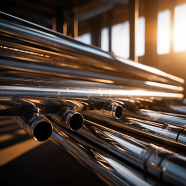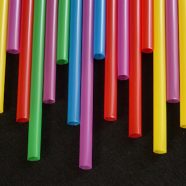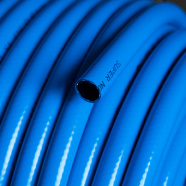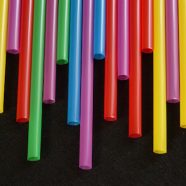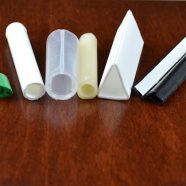What is Co-Extruded Plastic? An In-Depth Guide
Co-extruded profiles represents a significant innovation, revolutionizing how products are designed and produced in modern manufacturing. As a specialized process employed by a plastic extrusion company, co-extrusion allows for the fusion of multiple plastic materials into a single, composite structure. This advanced method enables the creation of products with enhanced properties, such as increased durability, improved aesthetics, and tailored functionality, which are indispensable in today’s diverse and demanding market. The significance of co-extruded plastic in modern manufacturing lies in its ability to meet specific application requirements and its contribution to efficiency and innovation, making it a crucial solution for industries seeking advanced material solutions. Understanding Co-Extruded Plastic Co-extruded plastic stands as a testament to the ingenuity of modern manufacturing. At its core, it is a process that harmonizes different plastic materials, each selected for specific qualities, and melds them into a single, unified structure. This technique combines desirable properties from each layer, such as UV resistance, vibrant coloration, or enhanced thermal insulation, into one product. Layer Synergy Imagine a product that needs to withstand outdoor elements. One layer could offer UV resistance to prevent degradation from sunlight, while another could provide color stability, ensuring that the product remains visually appealing over time. This synergy of layers results in a product far superior to what any single material could offer. Versatility The true beauty of co-extruded plastics lies in their adaptability. Depending on the application, layers can be customized for rigidity, flexibility, or tactile feel. This versatility opens doors to many industrial applications, from automotive components that require durability and aesthetic appeal to medical devices that demand specific safety standards. The Process of Co-Extrusion Co-extrusion is a multifaceted process, involving more than just the simultaneous extrusion of different materials. It encompasses a series of carefully orchestrated steps, each critical to the final product’s success. 1. Material Selection and Preparation The initial step in co-extrusion involves choosing the right combination of materials based on the desired properties of the final product. This selection process is crucial as it dictates the co-extruded product’s functional characteristics, such as durability, flexibility, or chemical resistance. Once selected, these materials are typically dried and prepared to ensure they are free from contaminants and moisture, which could affect the quality of the extrusion. 2. Precise Die Design and Configuration Die design is a pivotal element in co-extrusion. The die determines not only the shape of the final product but also how the different materials flow and merge. This requires expert engineering to ensure that each layer of material is precisely positioned and uniformly distributed. The die must be designed to maintain distinct layers without intermixing while ensuring a strong bond between the layers. 3. Extrusion Process During the extrusion phase, the prepared materials are fed into their respective hoppers and then into the extruder. They are heated to a molten state inside the extruder and pushed through the die. The complexity of co-extrusion lies in managing each material’s temperatures and flow rates to ensure they combine effectively as they pass through the die. 4. Cooling and Solidification After exiting the die, the co-extruded material enters a cooling phase, typically involving water baths or air cooling, to solidify the layers into a unified structure. The cooling rate is critical as it must be fast enough to prevent deformation but slow enough to avoid internal stresses or layer separation. Key Differences Between Co-Extrusion and Traditional Extrusion Co-extrusion represents a significant advancement in plastics manufacturing, setting itself apart from traditional extrusion with its ability to create more sophisticated and functional products. This process brings a new level of versatility and...
Read MoreQuality Assurance in Plastic Extrusion: Certifications and Standards
In plastic extrusion, suppliers are constantly striving to ensure the utmost quality and reliability of their products. This imperative is not just a business consideration, but a commitment to safety and excellence. For any plastic extrusion supplier, adhering to stringent quality assurance protocols is non-negotiable. This article explores the critical certifications and standards that underpin this industry, shedding light on their role in upholding the integrity and superiority of plastic extruded products. The Significance of Quality Assurance in Plastic Extrusion Quality assurance plays a pivotal role in the plastic extrusion industry, ensuring that products meet stringent standards for durability, safety, and performance. In this sector, common challenges include dimensional irregularities, inconsistent material properties, and surface defects, all of which can significantly impact the functionality and aesthetics of the final product. Quality assurance, through rigorous adherence to established standards and certifications, is the cornerstone that distinguishes leading plastic extrusion suppliers. It is a systematic promise of excellence that ensures products are not only fit for purpose but also contribute to the industry’s reputation for quality and reliability. In sectors such as construction, healthcare, and consumer goods, where plastic extruded products are integral, the margin for error is minimal. Reliable and safe performance is crucial, given the potential risks and costs of failure in these applications. An onsite example of effective quality assurance is the implementation of rigorous testing protocols, where extruded plastic components undergo detailed inspections for thickness, color consistency, and tensile strength. These checks, often aided by advanced measuring equipment and statistical process control techniques, help in early detection and rectification of any deviations from the desired specifications. This proactive approach not only enhances the reliability of the products but also streamlines the production process, reducing waste and improving overall efficiency. In essence, quality assurance serves as the backbone of the plastic extrusion industry, ensuring that each product adheres to both industry standards and customer expectations. Overview of the Plastic Extrusion Process The plastic extrusion process, a complex and finely-tuned operation, involves several critical steps, each requiring precision to ensure high product quality. Material Selection and Preparation: Selecting and preparing standard plastic material for extrusion. Melting: The raw plastic material is carefully melted, with attention to maintaining optimal conditions. Extrusion through Die: The molten plastic is then extruded through a die, forming continuous shapes like pipes, sheets, or tubes. Cooling and Solidification: Post-extrusion, the plastic undergoes cooling to solidify into its final shape. Quality Control Checks: At each stage, variables like temperature, pressure, and speed are meticulously managed. Regular inspections ensure these parameters are within the required specifications. Final Inspection: The final product undergoes rigorous quality checks to align with the industry’s exacting standards and specifications. In this process, managing critical variables is key to preventing any deviation that might compromise product integrity and lead to potential application failures. Therefore, plastic extrusion suppliers must exercise stringent control to ensure consistent product quality. Core Certifications in Plastic Extrusion Certifications provide a framework for companies to establish, implement, and maintain quality management systems. They serve as benchmarks for best practices in the industry. ISO 9001:2015 – The Global Standard for Quality Management ISO 9001:2015 sets a global benchmark for quality management systems in the plastic extrusion industry, emphasizing the delivery of high-quality products and services. This standard requires organizations to: Demonstrate Consistency in Product and Service Delivery: Organizations must demonstrate their ability to consistently offer products and services that meet customer and regulatory requirements. Enhancing Customer Satisfaction: A crucial aim is to increase customer satisfaction through the effective application of the quality management system. This involves: Creating processes to continuously improve...
Read MorePlastic Extrusion Advantages and Disadvantages
Plastic extrusion is a cornerstone in modern manufacturing, powering countless industries with its innovative capabilities. A comprehensive exploration of plastic extrusion advantages and disadvantages offers a window into its vast potential and the intricacies that define it. Drawing from extensive experience in plastic extrusion, Keller Plastics offers valuable insights and a distinctive take on this transformative process. Advantages and Disadvantages of Plastic Extrusion in Different Industries In the realm of manufacturing, the plastic extrusion advantages and disadvantages have shaped how industries approach design, production, and scalability. The adaptability of this technique, coupled with its capacity for high-volume production, presents a compelling case for its adoption across sectors. Automotive Industry Driven by consistent innovation, the automobile industry has recognized and adopted the inherent advantages of plastic extrusion. Advantages: Complex Parts: Components such as bumper inserts, door seals, and sunroof channels can be manufactured with intricate designs and impeccable precision. Weight and Cost Efficiency: Plastic extrusion provides lightweight alternatives that are cost-effective, impacting the overall vehicle efficiency positively. Durability: Materials like Polycarbonate and ABS, often extruded, provide longevity, reducing wear and tear over time. Disadvantages: Material Limitations: Certain automotive applications necessitate materials that might not be optimal for extrusion. Quality Consistency: Maintaining uniformity across large batches, especially with complex designs, poses challenges. In light of the automobile industry’s drive for efficiency and innovation, the benefits of plastic extrusion, notably its capacity for creating intricate designs, cost-effectiveness, and the durability of extruded materials, notably overshadow its challenges. While there are material limitations and consistency hurdles, the overall impact of plastic extrusion on vehicle performance and longevity signifies its pivotal role in automotive advancements. Construction and Infrastructure Navigating the expansive realm of construction reveals the undeniable footprint of plastic extrusion, ranging from foundational elements to ornate architectural details. Advantages: Versatile Applications: Extruded profiles find usage in window frames, insulation materials, and even decorative trims. Durability: These profiles offer resistance to elements, ensuring longevity. Customization: The array of designs that can be achieved allows for customization tailored to specific architectural needs. Disadvantages: Upfront Costs: Significant initial investments are sometimes required, especially for large-scale construction projects. Environmental Considerations: Sustainability practices need constant vigilance to ensure minimal environmental impact. Weighing the plastic extrusion advantages and disadvantages in the construction landscape, it becomes evident that the versatility, durability, and customization options significantly bolster its standing. While initial investments and environmental considerations are genuine concerns, the overarching benefits of extruded profiles in addressing various construction demands assert the method’s indispensable value in the industry. Packaging Industry Diving into the world of packaging reveals the pronounced influence of plastic extrusion, with its unmatched versatility serving as the linchpin. Advantages: Tailored Solutions: From flexible films for food products to rigid containers for cosmetics, plastic extrusion provides bespoke packaging solutions. Rapid Production: High demand in the packaging sector is met with timely, efficient production. Recyclability: Certain extruded plastics can be recycled, offering eco-friendly packaging options. Disadvantages: Environmental Concerns: Over-reliance on non-recyclable plastics poses disposal and environmental challenges. Material Restrictions: Not all desirable materials for packaging can be efficiently extruded. The packaging world’s relentless demand for innovation finds a robust response in plastic extrusion, even as it grapples with environmental challenges. Medical Devices and Healthcare In the precision-driven realm of medical applications, plastic extrusion has carved an indelible niche. Advantages: High Precision: Intricate medical devices, tubing, and surgical tools can be manufactured with impeccable accuracy. Sterility: Ensuring the aseptic nature of medical components is vital, and extrusion can meet these stringent standards. Material Diversity: Different medical applications can leverage the wide array of materials suitable for extrusion. Disadvantages: Strict Standards: Adhering to...
Read MoreA Clash of Techniques: Plastic Extrusion vs. Injection Molding Exposed
In the dynamic sphere of plastic manufacturing, a frequent point of contention or confusion lies in discerning the fundamental differences and applications of plastic extrusion vs injection molding. Though seemingly similar, these two processes serve distinct purposes and have unique advantages. With numerous products surrounding us, each shaped and formed through one of these techniques, understanding the contrast between them is essential. In this blog, we’ll unravel the complexities of these two techniques, shedding light on their evolution, methodologies, and significance. Overview of Injection Molding vs Plastic Extrusion Plastic manufacturing features two methodologies: plastic extrusion and injection molding. Both have been instrumental in sculpting the landscape of the products we see and use daily. These disparities highlight the need for a comprehensive understanding to ensure efficient usage. The essence of both plastic extrusion and injection molding lies in the transformative journey of plastic resins into tangible, functional products. Be it the intricate components of your vehicle or the sleek case of your mobile phone, these methods involve a meticulous process of heat application, pressure management, and design precision. Their foundational principle remains to convert raw materials into products, but the approach varies widely. Points of Convergence: Similarities in Extrusion and Injection Molding In plastics manufacturing, understanding the distinct characteristics of plastic extrusion vs injection molding is crucial. However, it’s also essential to highlight their shared aspects, as these commonalities reinforce the foundational techniques of the industry. Formative Purpose At their core, both injection molding vs plastic extrusion shape plastic into specific structures, catering to various product requirements. For instance, while plastic extrusion is preferred for creating long, continuous products like pipes or window frames, injection molding excels in producing items like bottle caps or automotive parts. Melting Process Both methods involve melting plastic resin, a critical step ensuring the material’s readiness for shaping. This melting ensures the material can be molded into intricate designs, whether it’s the detailed grooves in a plastic toy from injection molding or the consistent tubing for medical devices from plastic extrusion. Temperature and Pressure Precision Achieving optimal product quality mandates precise control over temperature and pressure. Whether it’s ensuring the clarity of a polycarbonate sheet through extrusion or the exact dimensional accuracy of a molded gear, the precision in these processes is paramount. Industrial Versatility Both plastic extrusion and injection molding have a wide industrial footprint, crafting a range from daily essentials to specialized apparatus. For example, while plastic extrusions might produce plastic sheets used in greenhouses, injection molding is responsible for creating durable casings for electronic devices. Highlighting these shared features showcases the fundamental principles behind plastic extrusion vs injection molding. While each method offers unique advantages and processes, their common ground is instrumental in the successful evolution of plastics manufacturing. Major Differences Between Plastic Extrusion vs Injection In plastic manufacturing, industry professionals must recognize the distinctions between plastic extrusion and injection molding. Both methods play crucial roles in transforming plastics, but they follow different processes and are better suited for distinct applications. Distinctive Mechanical Processes It’s crucial to note that while both processes transform plastic resins into finished products, the method and cycle of production differ substantially between plastic extrusion vs injection molding. The Mechanism of Plastic Extrusion Plastic extrusion operates on a continuous manufacturing process. Resin pellets are heated and then extruded through a specific die to acquire their final shape. Unlike the cyclic nature of injection molding, this continuous process can generate products of various lengths, meeting different industry demands. Injection Molding: A Detailed Insight In contrast, injection molding is characterized by its batch production cycle. Heated plastic is introduced...
Read MoreWhat Plastics Can Be Extruded?
Plastic extrusion turns solid pellets into molten plastic. Extruded plastics make everyday objects such as pipes, cable sheathing, and wire insulation; they can also make more complex objects such as footwear and automotive parts. Plastic extrusion involves raw materials forced under pressure through a die to create a continuous filament. These polymer filaments often possess improved mechanical characteristics over other processes and provide greater values in terms of strength, thickness, conductivity, or transparency. They are also commonly used for solar protection and optical windows. The final product has a uniform wall thickness, good mechanical strength, and excellent consistency among batches. High-strength polymers are excellent for one-piece extrusions, such as a boat hull or car roof , or even reinforcing fillers in advanced plastic materials. Polymer products can also be recycled, which allows them to be used in flexible packaging instead of traditional plastics such as polyethylene. They are also perfect for injection molding, extrusion forming, and blow molding. Types of Plastic Used in Extrusion Here are the plastics used according to extrusion type: Flexible Extrusion Flexible plastics manufacturing products are expected to have some flexibility, the most common being vinyl. This type of plastic is also known as extruded rubber, and it’s manufactured by mixing additives and fillers into compounds that often include polymers. The plastic properties created in this process then harden upon exiting the die head during extrusion. Rigid Extrusion Rigid plastics produce items that must withstand significant pressure and are often subjected to heavy stress. Some common applications include manufacturing toys, small household appliances, storage bags, and disposable cutlery. Rigid plastics can also be used for industrial purposes, such as mechanical parts and automotive components. These plastic properties can withstand high pressure because the polymer chains are connected in a straight line, making the result much stronger than flexible plastics. Sheet Extrusion The plastic extruder can manufacture plastic, sheets, and products such as plastic packaging film and shopping bags. The extruded plastics are fed through a die with a gradually increasing pressure and temperature until it emerges from the exit point as a continuous, uniform, and extruded product. These polymers are very easy to recycle due to their biodegradable nature. Tubing Extrusion This type of plastic is often used to create long, molded plastic profiles with round cross-sections. The goods are produced by plastic extruder through a die head that is also designed for hollows After exiting the die head, the product is cooled and cut off for further processing into various components or packaging. Overjacketing Extrusion These types of plastic are used to manufacture parts that are made to fit over another component. This process involves extruding polymers through a die head and then drawing the product through an overjacketing die that coats in one direction. The extruded plastics will have a smooth outer surface with an inside network of holes, allowing the part to be fitted over other components. Coextrusion This is formed when two or more polymers with different properties are extruded through a single, multi layer die head. The final products have multiple layers of material, and the final product highly depends on the coextrusion process and materials used to produce it. Benefits of Plastics Extrusion Here are the numerous benefits of plastic extrusion: Cost-effectiveness Plastic manufacturing equipment is highly efficient and cost-effective. Plastic manufacturing is a great option if a company wants to maintain a low overhead. It will also allow you to control important factors such as the material used and production speed. Increased Automation Extruded plastics have become increasingly automated, allowing companies to operate with fewer employees and at...
Read MoreWhat Machine Is Used For Plastic Tube Extrusion?
Understanding the various categories of extrusion machines available is essential to the success of a business. The machine used for plastic extrusion differs according to the material used and the desired product. The different plastic extrusion machines include single-screw extruders, multiple-screw extruders, and ram extruders. Whether you own a plastic extrusion machine or are looking to buy one, you might seek to understand which machinery to use for extrusion. At Keller Plastics, our team is extensively skilled and experienced to ensure quality output. Introduction To Plastic Extrusion Machines Simply put, a plastic extrusion machine converts raw plastic material to the desired product. The extrusion process of various extruder machines for plastic differs slightly based on the type of machine; however, the basic process is similar. An extruder machine’s primary parts are its screw, barrel, and screw drive motor. Other components important for extrusion are the raw plastic material and the die. The raw material majorly used is resin plastic. Resins are small plastic pellets that are simple to load and melt. The die is a component used in molding the plastic melt into different shapes. Dies are of various forms, such as; a rod, tube, sheet, film, coating, or a custom profile. Types Of Plastic Extrusion Machines The three primary plastic extruding extruder machines are single-screw extruders, multiple-screw extruders, and ram extruders. The most widely used plastic extrusion machines are single-screw and multiple-screw extruders, offering endless capabilities of extruded plastic profiles. However, ram extruders, which employ a plunger instead of a screw to melt plastics, are equally effective. Single-screw extruders use one screw to rotate melted plastic inside a barrel. The melt is molded into a continuous profile depending on the die in use and then cut to length. Sheet extrusion, pipe extrusion, and modified compounding are examples of applications of these intruders. Single-screw extruders are simple to use and inexpensive. On the other hand, multiple-screw extruders are a little more complicated and pricier than single-screw machines. Multiple-screw machines use more than one screw inside the barrel, making them superior to the single-screw in blending, reaction, efficiency, and speed. At Keller Plastics, we believe in giving you the best quality of products, and therefore our manufacturing capabilities are just what you need. Benefits Of Plastic Extrusion Machines Plastic extruding machines feature components that make them more appealing to use. These include; High Volume Manufacturing At Low Costs Plastic extruding machines can manufacture large volumes of products without compromising consistency and quality. The seamless manufacturing of large volumes of products saves on the cost of production. Versatility Extrusion machines can combine various types of raw materials that improve product properties. Additives in the extrusion process enhance features such as durability, strength, flexibility, fire resistance, and color matching. Precision An extruder machine for plastics can produce profiles of different lengths with high accuracy for short and long forms. Post Extrusion Alterations Plastic extruding machines mold plastic extrusions into various shapes. When squeezed through the die, the melted plastic takes a permanent form. Continuous Production An extruder machine can quickly and effectively produce shapes of various lengths continuously. Applications Of Plastic Extrusion Machines Various sectors require continuous profiles. Therefore, plastic extruding machines are in use across these sectors, which constitute; Sheets Extrusion It involves the production of sheets. The most favorable materials for sheet extrusion include PC, PP, PET, PVC, and PS. Extrusion Of Pipes And Tubes Pipes and tubes have simple cylindrical features that make them appropriate for extrusion. Most materials used in the extrusion process include PVC, HDPE, PEX, PP-R, and ABS. Blown-Film Extrusion Here extrusion is used to produce...
Read More

